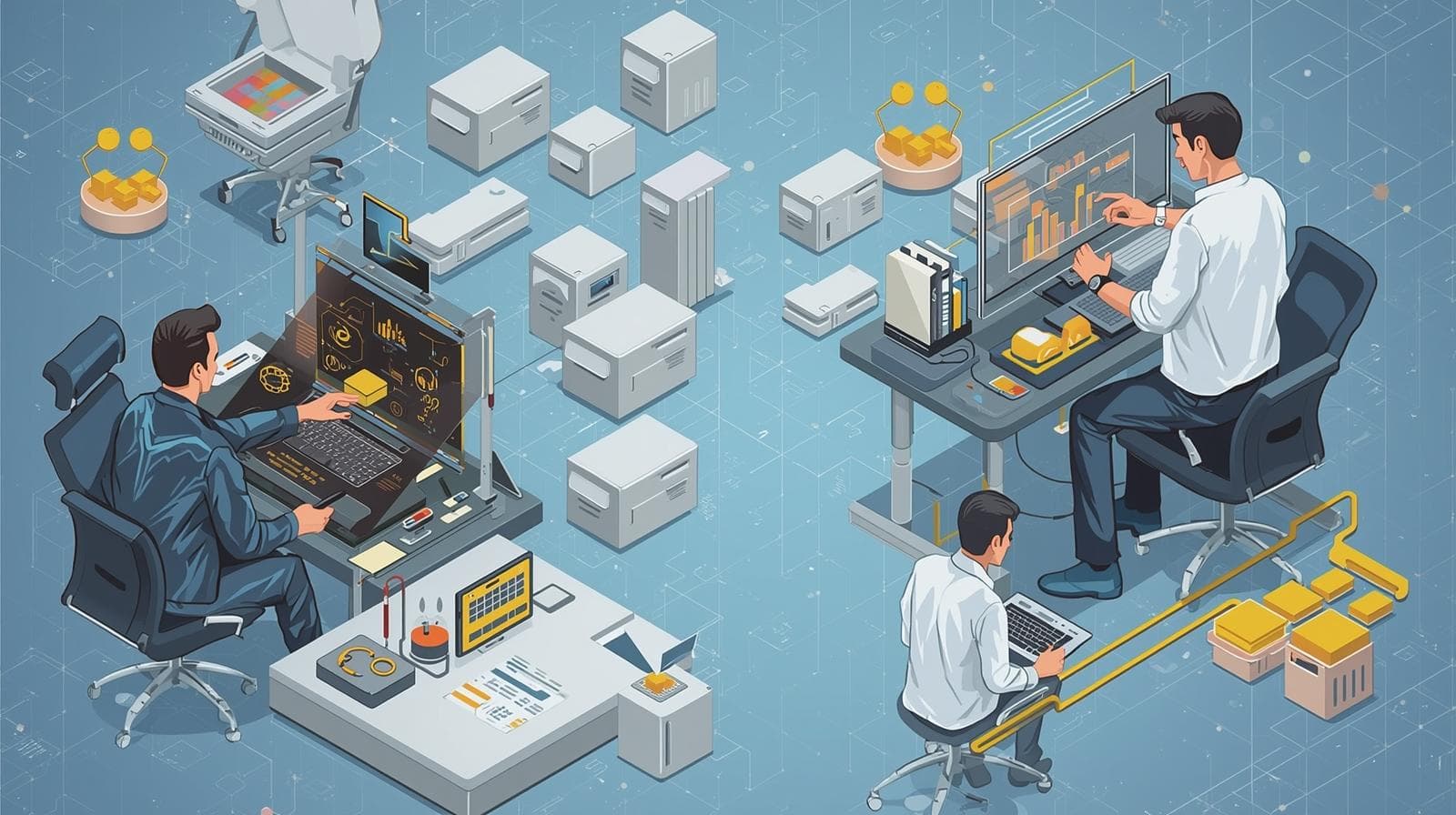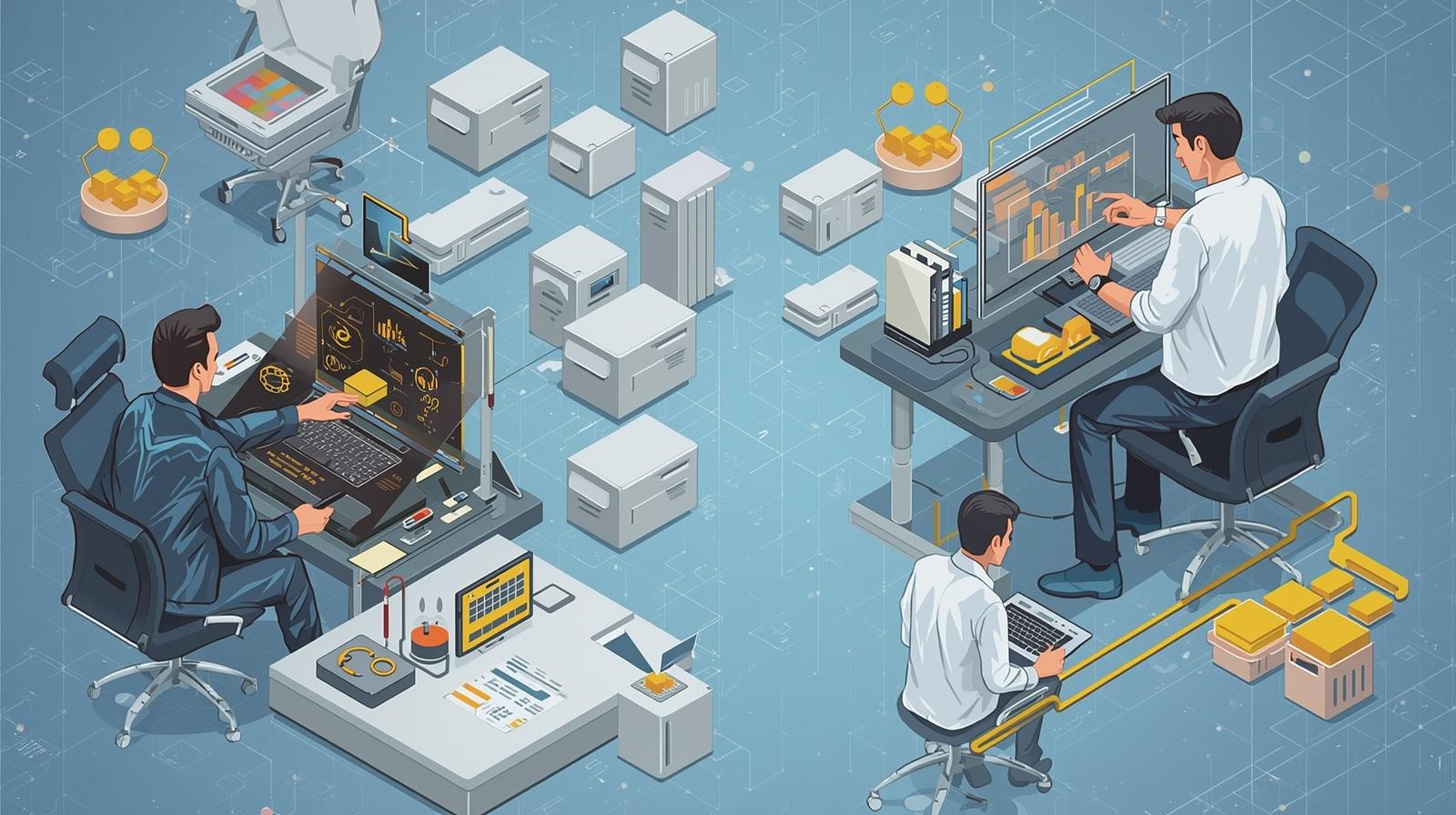Top Tools for Data Analysts & IT Engineers in 2025

Explore the essential software and platforms for Data Analysts and IT Engineers in 2025. Dive into detailed tools, real-world use cases, best practices, and FAQs to supercharge your career.

Top Tools for Data Analysts & IT Engineers in 2025
The 2025 Toolkit: Essential Tools for Data Analysts and IT Engineers
The digital world isn't just evolving; it's accelerating. For Data Analysts and IT Engineers, staying ahead of the curve isn't a luxury—it's a necessity. The right tools are the levers that allow these professionals to move the world, turning raw data into actionable insights and building the resilient, scalable systems that power our modern lives.
But with a dizzying array of new platforms and languages emerging every year, how do you know where to focus your energy? You've come to the right place. This comprehensive guide will walk you through the top tools defining 2025, complete with real-world examples, best practices, and a clear path to mastering them.
Let's dive in.
Part 1: The Data Analyst's Arsenal: From Raw Data to Riveting Stories
A Data Analyst is a modern-day detective. They sift through clues (data) to find patterns, answer critical business questions, and tell a compelling story that drives decision-making. Their toolkit is designed for querying, cleaning, visualizing, and interpreting data.
1. The Unshakeable Foundation: SQL & Python
SQL (Structured Query Language)
Think of SQL as the universal key to every database. It's not going anywhere. In 2025, its importance is only magnified.
What it is: A programming language specifically designed for managing and querying relational databases.
Real-World Use Case: An e-commerce company wants to identify its top 10 customers by revenue in the last quarter. A Data Analyst would use a SQL query to
SELECTcustomer names,SUMtheir order totals,FROMthe orders table,WHEREthe order date is in the last quarter,GROUP BYcustomer, andORDER BYthe total in descending order. Simple, powerful, and irreplaceable.Best Practice: Move beyond basic
SELECT *. Master window functions (likeROW_NUMBER()andRANK()), Common Table Expressions (CTEs), and efficientJOINstrategies to handle complex, large-scale data.
Python
If SQL is the key, Python is the entire Swiss Army knife. Its simplicity and the vast ecosystem of data-centric libraries (like Pandas, NumPy, and Scikit-learn) make it the go-to for everything from data cleaning to building machine learning models.
What it is: A general-purpose, high-level programming language renowned for its readability and versatility.
Real-World Use Case: A healthcare provider has patient data scattered across multiple Excel and CSV files with inconsistent formatting. A Data Analyst can write a Python script using the
Pandaslibrary to seamlessly combine these files, clean the data (fixing dates, standardizing names), and flag any anomalies for further review.Best Practice: Leverage Jupyter Notebooks for exploratory analysis—they are perfect for writing code in small, executable chunks and visualizing results on the fly. To learn professional software development courses such as Python Programming, Full Stack Development, and MERN Stack, visit and enroll today at codercrafter.in. Our courses are designed to give you this exact, hands-on experience.
2. Visualization & BI Platforms: Seeing is Believing
Tableau & Power BI
These tools transform your analyzed data into interactive dashboards and reports that anyone in the company, from a marketing intern to the CEO, can understand and use.
Tableau: Known for its powerful and flexible visualization capabilities. It's often the choice for creating complex, beautiful, and highly interactive dashboards.
Power BI: Deeply integrated with the Microsoft ecosystem (like Azure and Office 365). It's incredibly strong for business reporting and often more cost-effective.
Real-World Use Case: A retail chain uses Power BI to create a live dashboard showing sales performance across all stores. The dashboard has filters for region, time, and product category, allowing managers to drill down and identify underperforming areas or spot trending products instantly.
Best Practice: Always start with the "so what?" Design your dashboards with a clear narrative. Avoid clutter and chart junk; the goal is insight, not just impressive graphics.
3. The Cloud-Native Powerhouses: Snowflake & BigQuery
The era of on-premise data warehouses is fading. The cloud is king, and these platforms rule the domain.
Snowflake: A cloud-based data warehouse offered as a Software-as-a-Service (SaaS). Its unique architecture separates storage and compute, allowing for unparalleled scalability and cost-efficiency.
BigQuery: Google's serverless, highly scalable data warehouse. It's famous for its speed in running SQL queries on massive datasets and its tight integration with other Google Cloud services.
Real-World Use Case: A mobile gaming company collects terabytes of user interaction data daily. Using Snowflake, they can store this data cost-effectively and "spin up" a large virtual warehouse only when they need to run a complex analysis, saving thousands in infrastructure costs.
Part 2: The IT Engineer's Workshop: Building & Maintaining the Digital Backbone
IT Engineers are the architects and builders of the digital world. They are responsible for the systems, networks, and infrastructure that applications run on. Their tools are for automation, containerization, orchestration, and monitoring.
1. The Containerization Duo: Docker & Kubernetes
Docker
Docker standardized the concept of "containerization." A container packages an application with all its dependencies (libraries, code, runtime) into a single, portable unit that runs consistently anywhere.
What it is: A platform to develop, ship, and run applications inside containers.
Real-World Use Case: A development team writes an application on macOS. They can package it into a Docker container and be 100% confident it will run exactly the same way on a Windows server or a Linux-based cloud machine, eliminating the classic "but it worked on my machine!" problem.
Kubernetes (K8s)
If Docker is about creating a single container, Kubernetes is about managing thousands of them. It's an orchestration system that automates the deployment, scaling, and management of containerized applications.
What it is: An open-source container orchestration platform.
Real-World Use Case: An online streaming service uses Kubernetes to run its video transcoding microservices. During a major sports event, traffic spikes. Kubernetes automatically detects the increased load and "scales out" by deploying more containers to handle the traffic, ensuring the service doesn't crash. When the event ends, it "scales in" to save resources.
Best Practice: Embrace Infrastructure as Code (IaC) tools like Terraform to define and provision your Kubernetes clusters. This makes your infrastructure reproducible, version-controlled, and less prone to human error.
2. The Automation Maestro: Ansible
Manual server configuration is slow, error-prone, and simply not scalable. Ansible is an automation tool that solves this.
What it is: An open-source IT configuration management, deployment, and orchestration tool. It uses a simple, human-readable language (YAML).
Real-World Use Case: A bank needs to ensure its security patches are applied to hundreds of web servers. An engineer writes an Ansible "playbook" that defines the task. With a single command, Ansible can SSH into all servers simultaneously, apply the patch, and report back on the status, ensuring consistency and compliance.
Best Practice: Keep your Ansible playbooks in a Git repository. This allows for version control, collaboration, and rolling back changes if a new playbook causes issues.
3. The Cloud Giants: AWS, Azure, & GCP
Proficiency in at least one major cloud platform is non-negotiable for modern IT Engineers.
AWS (Amazon Web Services): The market leader with the most extensive catalog of services.
Azure (Microsoft Azure: The strongest choice for enterprises deeply invested in the Microsoft stack.
GCP (Google Cloud Platform): Known for its strengths in data analytics, AI/ML, and open-source technologies like Kubernetes.
Real-World Use Case: A startup building a new mobile app might use AWS's EC2 for virtual servers, RDS for its managed database, and S3 for storing user files, getting to market quickly without building their own data center.
FAQs: Your Top Questions, Answered
Q1: I'm a complete beginner. Which tool should I learn first?
For Data Analysts: Start with SQL. It's the foundational skill. For IT Engineers: Start with a cloud platform (AWS/Azure/GCP) and the basics of Linux.
For a structured path in either field, our programs at codercrafter.in provide a curated curriculum that takes you from beginner to job-ready.
Q2: Are low-code/no-code platforms replacing the need for these tools?
They are augmenting, not replacing. Tools like Airtable or Microsoft Power Apps are fantastic for empowering business users to build simple solutions. However, for complex, scalable, and customized systems, the power and flexibility of traditional programming and engineering tools remain essential.
Q3: How important is it to be certified in these tools (e.g., AWS Certified Solutions Architect, Tableau Desktop Specialist)?
Extremely important. Certifications validate your skills to employers and can significantly boost your resume and earning potential. They provide a structured learning path and prove your commitment to the craft.
Q4: What's the biggest trend shaping these tools in 2025?
AI Integration. We're seeing AI being woven directly into these platforms—from AI-assisted code completion in IDEs (like GitHub Copilot) to AI-powered anomaly detection in monitoring tools and automated insights in BI platforms like Tableau.
Conclusion: Building Your Future-Proof Career
The landscape for Data Analysts and IT Engineers is vibrant and full of opportunity. The tools we've discussed aren't just software; they are the building blocks of your career. Mastering them allows you to solve real-world problems, drive innovation, and become an invaluable asset to any team.
The journey begins with a single step: choosing to learn. Whether you're querying your first database with SQL, building your first Docker container, or creating an insightful dashboard, the skills you build today will define your success tomorrow.
Ready to take that step and master these in-demand technologies? To learn professional software development courses such as Python Programming, Full Stack Development, and MERN Stack, visit and enroll today at codercrafter.in. Let's build your future, together.









